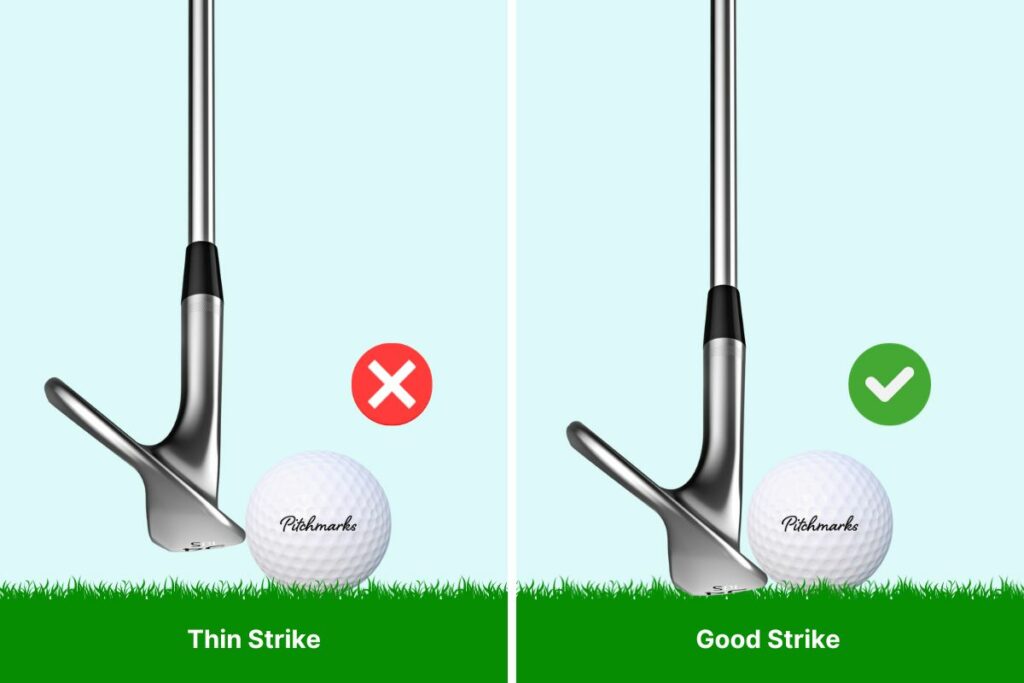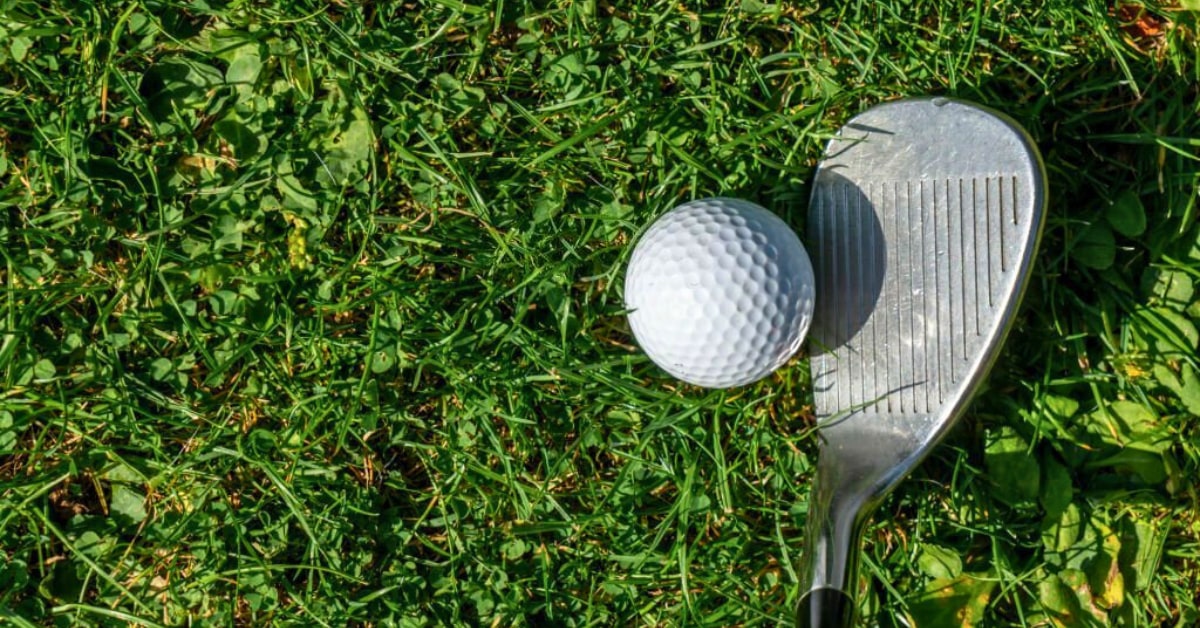Key Points
- Check your setup, especially posture, ball position, and alignment.
- Rotate in the swing, without excessive lateral or vertical movement.
- Smooth the transition to avoid coming out of your posture early.
- Keep your hands ahead of the clubface in the downswing.
- Strike down on the ball for solid and repeatable contact.
Learning to be a good wedge player is something a golfer needs to strive towards if they want to be an excellent all-around player.
But for many, hitting good wedge shots is a struggle. Poor distance control, fat shots, and thin shots can be very frustrating.
In this guide, I’ll teach you how to stop thinning wedges. By making some tweaks to your setup, you can start consistently hitting flush wedge shots.
What is a Thin Golf Shot?
A thin golf shot is when a ball is struck, usually with the clubhead’s leading edge, slightly below its equator. The ball flies low, and often too far.

Golfers are particularly prone to hitting their wedges thin, as they are the shortest clubs in the bag. This increases the chance of the leading edge catching the ball, which is exaggerated if you come up and out of your posture.
For a good strike with a wedge, you need to focus on getting the leading edge hitting the turf immediately underneath the ball.
Let’s diagnose those thinned wedge shots.
How to Stop Thinning Wedges
Now that we know what a thin shot is, we need to help you get those shots out of your system and start hitting more solid wedge shots.
Below are some checkpoints to help you start hitting your wedges flush.
Step 1: Check Your Setup
Always and forever, when you are struggling and hitting poor shots, going back to the pre-swing fundamentals is the correct place to start.
The key here is to look at your posture, grip, and alignment. With thin shots being the main point of discussion here, your posture is of the most importance.
Also, ensuring your ball position is correct will put you in the optimal position to make good contact with your wedges.
If the ball is too far forward in your stance, you’ll be prone to hitting the ball thin.
This is because the swing arc will bottom out too far in front of the ball. As a result, you’ll catch the ball on the up with the leading edge. Similarly, if your ball position is too far back, it can force you to get too steep.
With wedges, you want to strive for a neutral ball position. That means you want it positioned in the middle of your stance, directly below your eyes.
Have a look at what a good ball position looks like in the video below:
Step 2: Rotate and Use Your Core
Next, you need to stay steady with your head, sternum, and core as you rotate your hips and upper torso as you move back in your swing from address.
You can have some horizontal movement but not too much, and you definitely need to stay away from moving your body up during your backswing.
The key to avoiding thinning wedges is to focus on rotating your body, without too much lateral or vertical movement. It’s the recipe for consistency.
Step 3: Smooth Transition From the Top
Having a smooth movement in transition from the end of your backswing into the start of your downswing is also critical to prevent thinned wedge shots.
Golfers who are too fast in their transition will often come out of their posture, and early extend. Typically, this results in poor contact at impact.
In a good transition, you are loading into your lead side, which will allow for a good downswing to occur as you continue down from the top. Float into your lead foot, and have your lead shoulder move down and forward slightly.
Step 4: Downswing Sequence and Proper Rotation
As outlined in Eric Cogorno’s video above, once you load into the lead side in transition, you will need to start unwinding the body, piece by piece.
This begins with the hips, torso, and hands, followed by the clubhead coming into the ball at impact. Making sure those hands are leading before the clubface gets to the ball is very important to avoiding thin wedge shots.
Leading with the hands is also a great technique to learn when trying to hit flighted wedge shots — keeping the ball below the wind.
Step 5: Focus on Contact
Here’s the outline for making good contact with your wedges:
Hands Forward → Clubface Impacts Ball on a Descending Path → Clubface Interacts with the Ground After the Ball.
Golfers who tend to hit thin shots are often scared of striking the ground. That fear will result in a clubhead that slows down as it approaches the ball at impact, which is a killer in the golf swing and will never result in good, crisp ball striking.
Equipment Considerations
For a consistent strike with your wedges, it’s important to use equipment with the correct setup for your swing type and local course conditions.
If you tend to hit your wedges thin, consider using a wedge with less bounce.
That way, the leading edge will sit closer to the turf. This reduces the effects of striking the ball directly with the leading edge and can improve your strike.
See More: Best Wedge Bounce for 60-Degree Wedge


